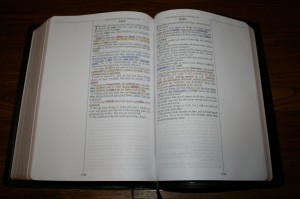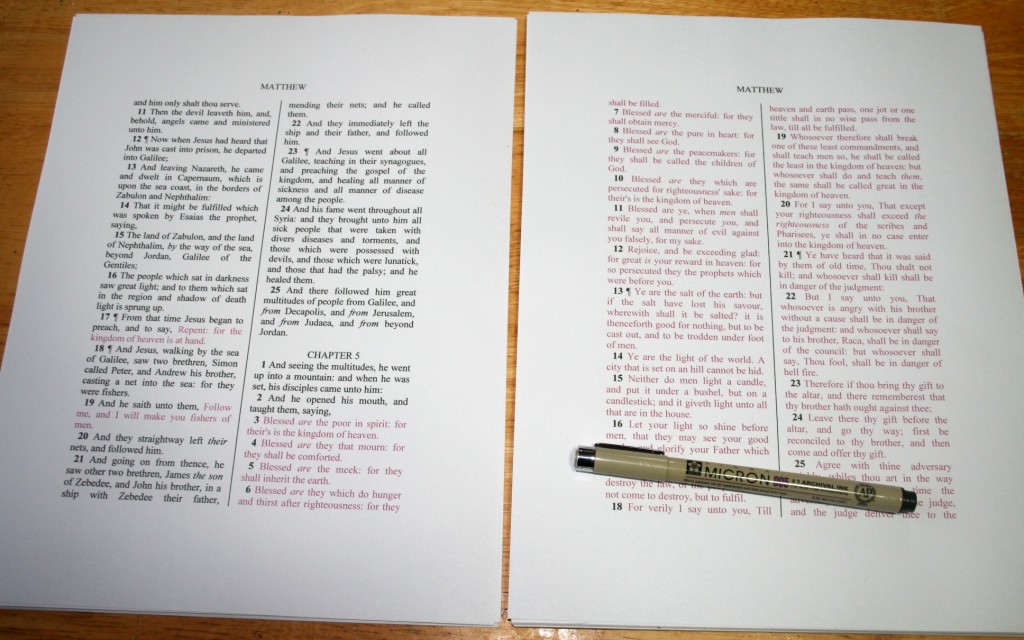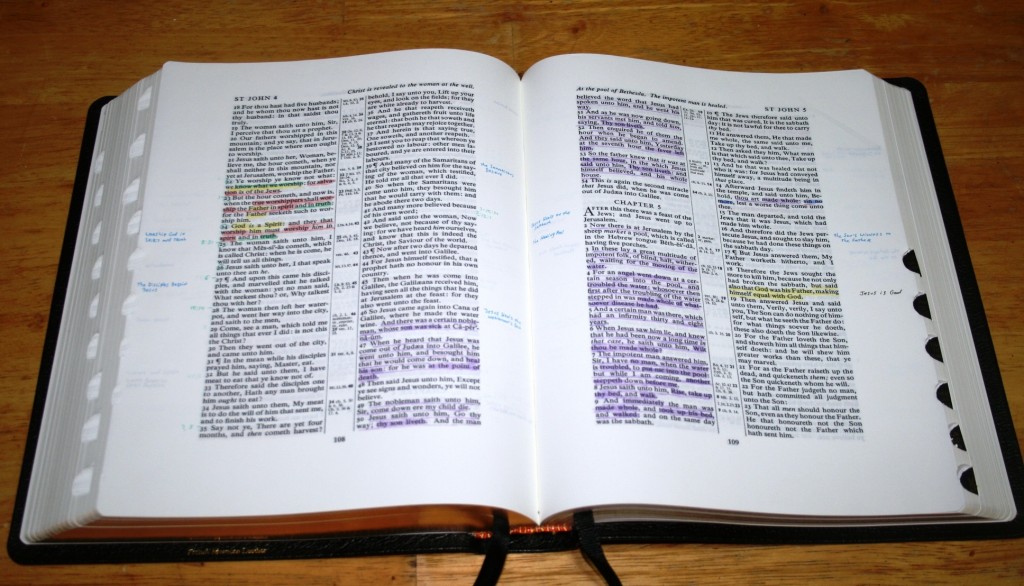 Chain references provide a great way to perform a topical study. Most Bibles that have references do not have chain references. Instead, they have cross references. Cross references are great, but it can get very confusing when you have to flip back and forth over the same verses over and over. Some Bibles do not have the verses linked to the reference, so there’s no easy way to know which reference will go with which portion of the verse. If your Bible has any room for writing at all, you can greatly expand the study quality of your Bible by adding your own chain reference system.
Chain references provide a great way to perform a topical study. Most Bibles that have references do not have chain references. Instead, they have cross references. Cross references are great, but it can get very confusing when you have to flip back and forth over the same verses over and over. Some Bibles do not have the verses linked to the reference, so there’s no easy way to know which reference will go with which portion of the verse. If your Bible has any room for writing at all, you can greatly expand the study quality of your Bible by adding your own chain reference system.
Ryan Gustason of Pentecostal Blogger has written an article on creating your own study Bible. He is using a red-letter Word document, created his own layout, and downloaded a unique font set to create his own symbol system. Ryan provides links to all the downloads you need to create your own study Bible and symbol system. You can see his article here:
Creating a Study Bible
Learn MoreLoose-leaf Bibles provide a great way to add your own notes and pages to your Bible. There are several available from Hendrickson, so at first printing your own hardly seems worth it. It comes down to what features you want in your Bible. Printing your own give you even more advantages and options. For one, if you don’t like something you’ve written or highlighted, simply print the page out again and start over. Loose-leaf Bibles are a nice way to make your own Study Bible- you can type your own notes and then print it out without having to write anything by hand.
Learn MoreBible marking is a form of inductive study and can be a great way to interact with the scriptures. Once you’ve marked in your Bible it starts to become a reflection of your study of God’s Word. It becomes personal. Over time, it becomes a companion. It becomes a valuable study Bible. No two marked Bibles are alike. Marking in your Bible is well worth the effort, but the really hard part is knowing what to mark and how.
Learn More Sometimes I like to read a Bible that I haven’t marked in, just so I can see a clean text. Sometimes I find the markings to be distracting. In fact, I find the headings and notes in study Bibles distracting. Sometimes I want to just read. There is a way to mark your Bible and still be able to read it without being distracted by the markings.
Sometimes I like to read a Bible that I haven’t marked in, just so I can see a clean text. Sometimes I find the markings to be distracting. In fact, I find the headings and notes in study Bibles distracting. Sometimes I want to just read. There is a way to mark your Bible and still be able to read it without being distracted by the markings.
One of my favorite Bibles is the Thompson Chain Reference. I like chain reference studies because they are topical, and they allow Scripture to interpret Scripture. I like the Thompson, but I wanted to add some chains, combine some topics, add my own topics, etc. Basically, I wanted to make my own version of the Thompson. This is one of the reasons I wanted a wide-margin Bible
I’ve been working on my topical chain list to add to my Bible. The list is mostly doctrinal based, since that is what I study the most, and where I differ the most from other study Bibles, including the Thompson. As one example, try finding a chain on the Rapture or the Millennium. Some Bibles have them, such as the Prophecy Study Bible by Tim LaHaye and the Life in the Spirit Study Bible, but they are missing other reference chains that I want, so I am continuing my topical chain reference project.
I felt that the chains themselves would make a nice Bible study, so I’ve decided to publish my chain reference system here on Studies in Scripture. The chains will not be exhaustive and they can be modified. Also, the chains can be added to any Bible with enough writing space, so it is something that I can still use when I move from one Bible to another.
The next several week’s worth of posts will include my chains (and chains I’ve borrowed). I am starting with a study on the end times because it is so relevant to us today. These posts will be Scripture only- no commentary from me. Feel free to use them in any way you like, such as devotionals, personal studies, group studies, preaching, teaching, etc. If you see something that you think should be included or changed, please let me know.
Learn More

